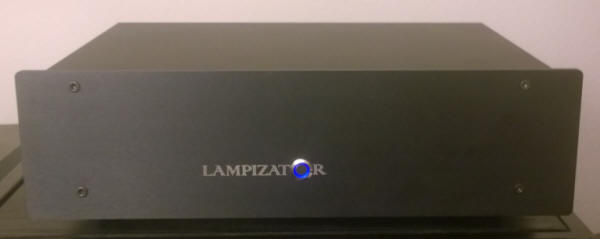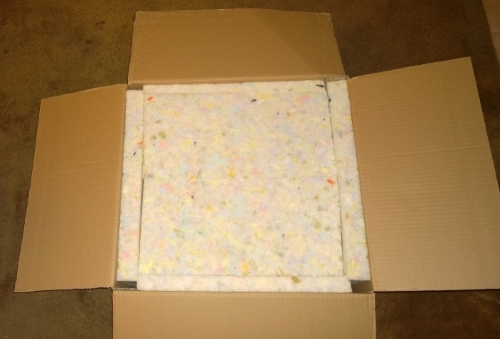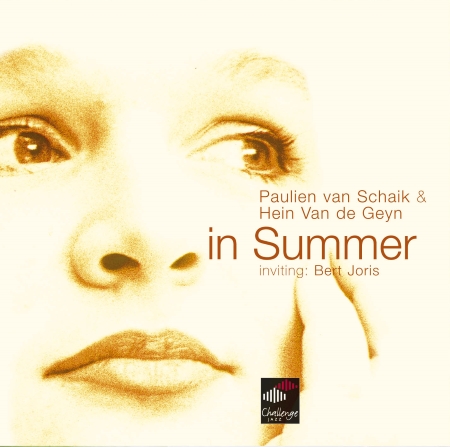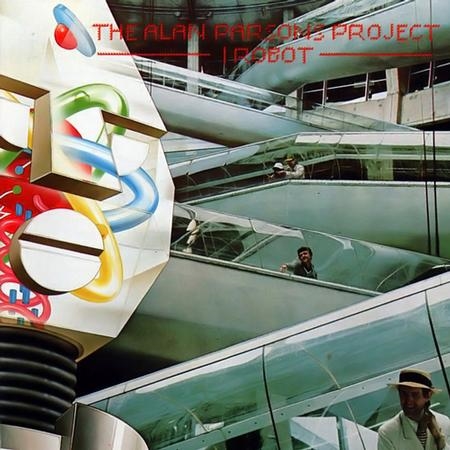You are reading the older HTML site
Positive
Feedback ISSUE 76
Lampizator's 5th
Generation DSD DAC: A Game Changer
The New Lampizator Generation V DSD DAC (Photo: Brian Moura) In May I attended The Show in Newport Beach with a list of new products I wanted to hear. Near the top of that list were the widely applauded, tube-based Digital to Analog Converters from Lampizator in Europe. They had captured the attention—and dollars—of many music fans in Europe, Asia and the United States. As many of you know, my audition of the company's "Big 7" statement DAC in Newport Beach and interview with the company's main man Lukasz Fikas (HERE) left me very impressed and wanting to delve deeper into these products. Reading the review of the Level 4 Lampizator model by Positive Feedback's Mark Pearson (HERE) only reinforced my listening experience and impressions that there was something very special happening with this company and its audio products. Since Positive Feedback had already covered the top-of-the-line Big 7 and the Level 4, I looked over their product line and put in a request to review the company's DSD DAC. What makes this DSD DAC so interesting is that it dispenses with a traditional DAC design, where DSD is played through a DAC chip, and is sometimes an extra-cost add-on option to an existing PCM DAC design. Here, Lampizator says it takes a simplified approach that "works purely in the analog domain—with passive filters and active tube circuits—without a DAC converter chip. There is no digital processing of any kind. It is the most 'native DSD' player known to mankind and produces a musical spectacle unheard before." Better yet, the company passes on the lower parts count and simplified design to the consumer by selling it at a starting price of just $3400. I was surprised when the review sample was not only arranged, but they went one step further and sent over one of the first of the new 5th Generation or "V Generation" DSD DACs for Positive Feedback to review. Fikas tells me the new V Generation DACs include further circuit refinements and enhancements from the 4th Generation DACs that have been on the market. Fred Ainsley at the company's North America distribution center in New York recommended that I try one tweak to the stock configuration—the addition of Jupiter capacitors (a $360 option)—which both he and Lukasz Fikas feel outperforms comparable caps from other companies including Duelund. So, the change was made and the DSD DAC began the assembly process. Ah, the plot thickens.
A Well Packaged DAC (Photo: Brian Moura) The DSD DAC Arrives The DSD DAC arrived from Lampizator headquarters in Europe quite well packaged. The DAC was heavily wrapped in plastic. The wrapped DAC was then placed in a box that was surrounded by thick foam that contoured to the unit. It was firmly packed and survived its trip from the factory in Poland quite well—all tubes intact and ready for setup. A Look Inside – Where Are the Tubes? Looking at the unit, you will probably be wondering, where are the tubes? On the DSD DAC they are hidden on the bottom of the unit in a recessed area that holds all three tubes. This facilitates placing the DSD DAC in an audio rack, but may be a disappointment to those who enjoy the glow of tube based audio gear. (For me, it's a clever design touch). Cables and Power It is worth mentioning that the DAC arrives all by itself. There are no cables included in the DSD DAC box. Talking with Lukasz Fikas revealed his view that all of their DACs are top flight audio products. They feel that any cables they would include with the DAC would be quickly discarded in favor of higher quality products. I viewed this as an opportunity to experiment with different cables to come up with the best results. My first finding was that the power cable and power unit turns out to be very important to the results you get from the DSD DAC, even more so than other cables. I tried a stock power cable and one that filtered the power. Neither performed as well as the Kimber Kable PK 14 Power Kable ($228 from Kimber Kable), which provided more current to the DSD DAC and gave it significantly more dynamic range. I also used one of the "HC" (High Current) outlets on PS Audio's excellent Power Plant P3 ($2499 from PS Audio) to provide AC power to the DAC. This provided better performance than connecting the DSD DAC directly to the AC wall outlet. Turning to the stereo interconnects between my Preamp/Switcher (Switchman II from Ed Meitner's EMM Labs) and the DSD DAC, Lampizator North America recommends a pair of Dana Cables. I tried a pair of Classic Gold Interconnects from Dana Cables ($945 from Gingko Audio), along with several different interconnect cables I owned, and agreed with the Lampizator team. The Dana Cable Classic Gold interconnects do indeed provide improved imaging and clarity with the DSD DAC. As a bonus, the Classic Gold interconnect cables have a unique locking mechanism that you initially unscrew and then tighten to insure a strong connection. Very effective—and very well designed. I also needed a good USB Cable between the Lenovo Yoga 2 Pro Laptop I was using to drive the DSD DAC. I tried a few options before settling on a 3 Meter length Kimber B-Bus USB Cable ($100 from Music Direct). The Kimber USB Cable offered a very true connection to both the DAC and PC and allowed me to switch between USB connections on the PC and another DAC without a glitch. Sonically it was an upgrade from stock USB cables and proved more dependable than other USB cables. Set Up While the DSD DAC does not come with a User's Manual or Drivers, if you have experience with using a DAC, setup is pretty straightforward. The DAC uses the popular Amanero Technologies Combo 384 USB interface board to handle data transmission to the unit. Lampizator provides a link to the Amanero Web site that provides both Windows drivers for this board. Amanero reports that Mac and Linux users will not need to install a driver for this interface card. When setting up your music player software (JRiver's Media Center, Foobar, HQ Player, etc.), the Combo 384 Amanero USB Driver and DoP (DSD over PCM) must be selected before operating the DAC. (For more on what DoP is and how it works, I recommend Andreas Koch's excellent article in Positive Feedback—HERE). Once the Combo 384 USB and DoP settings have been made in the player software, you're ready to start the burn-in process. Burn-In: Highly Recommended With new audio equipment, manufacturers often recommend burning-in the unit for some period of time before making serious listening comparisons and judgments about sound quality and performance. This is the case with the DSD DAC. Lampizator North America recommends a minimum of 150 hours, with best results starting at 250 hours of burn-in. Following their recommendations, I began playing music downloads through the DSD DAC at low volume for a number of days to burn the DAC in. To play it safe, I actually put over 300 hours of burn-in time on the DSD DAC before serious evaluations began—with periodic check-ins along the way. What I found was that, out of the box, the DSD DAC delivers very clean and quiet music playback. For some, this performance would be acceptable. At the 50 hour mark, the low end bass on the DSD DAC started to really arrive with a nice, full sound starting at 125 hours. I'd highly recommend giving the DSD DAC at least 125 hours of burn-in time before starting your evaluations. But I will note that the sound quality of this DAC was so compelling that it was very tempting to sneak a listen in to the music/video room from time to time, just to hear how things were evolving! Listening to Some DSD Music Once burn-in was complete, it was time to listen to some music. Since this is a DSD DAC, DSD music was required. The DAC handles Single Rate (DSD-64) and Double Rate (DSD-128) music downloads in Stereo. I used a variety of DSD files sourced from PCM Masters, Analog Masters, and DSD Masters in my evaluation of the unit. Here are some of the highlights from these listening sessions. Single Rate DSD (DSD-64) Stereo – from DSD Recordings While there is a lot of talk these days about Double Rate (DSD-128), and even Quad Rate (DSD-256) music downloads, it's important to remind everyone that most of the DSD music available today is from Single Rate DSD-64 recordings and transfers. And many of these titles are very good.
In Summer – Paulien van Schaik (Image: NativeDSD.com) The album In Summer features Jazz vocalist Paulien van Schaik, trumpeter Bert Joris, and bass player Hein Van De Geyn on the Challenge Jazz label from NativeDSD.com. This album was a standout on SACD for its very clear recording and sonics. How would it fare as DSD download? Playing the track "Them There Eyes" through the DSD DAC was startling—it delivered crystal clear vocals plus outstanding definition and placement in space of the trumpet and bass. It was much clearer and superior to any playback on SACD I have heard in the past. Wow. Next up was the Spanish-flavored album Manuel De Falla, featuring the very talented guitarists the Katona Twins, on Channel Classics. This was also from NativeDSD.com. Channel's talented Director, Producer, & Engineer, Jared Sacks, is known for his excellent recordings done on-site at venues around the world. Right out of the gate, the track "Spanish Dance" offers wonderful spatial cues and ambience, along with a very dynamic performance that includes David Garcia Mir on percussion. As the album proceeds, some tracks also feature soprano Juanita Lascarro. The album's dynamic range, lively performances, and energy are precisely reproduced by the DSD DAC. For fun, you can crank this one up volume wise and the DSD DAC keeps pace no matter how high you go. Impressive. Also worth a mention is Super Artists in Super Audio, Volume 1 on Channel Classics from NativeDSD.com. This is a 17-track release that features a generous selection of excellent performances from the label, handpicked by Jared Sacks. There are several standouts here—my favorites are the performances by violinist Rachel Podger. Her expert violin playing comes across vividly with the DSD DAC, and track after track impresses. Best of all, this DSD download only costs $8.33 on the web—how can you go wrong? Single Rate DSD (DSD-64) Stereo – from Analog Master Tapes Many of our readers know that Direct Stream Digital (DSD) was originally developed as an archive format for analog master tapes. It was only later that it came into use on Super Audio CDs (SACD) and, more recently, on high resolution music downloads. Fortunately, we are beginning to hear the results of taking analog master tapes, in some cases recorded in the pre-PCM era, transferred directly to DSD. And they can be quite impressive.
I Robot – Alan Parsons (Image: Acoustic Sounds) First up is Alan Parson's classic album I Robot, which Sony Music has recently transferred "on an all-tube cutting system from the Original ¼" Analog Master Tapes at Bernie Grundman Mastering." It is now available as a DSD-64 Stereo Download on the Arista label from Acoustic Sounds' SuperHirez.com site. The title track and several other tracks capture the adventurous album mix and performance that established Parsons as an artist to be followed. Hearing the album with the DSD DAC is a special treat, indeed. Next up is the self-titled album Creedence Clearwater Revival on the Fantasy label from SuperHirez.com. The classic hit "Suzy Q" starts out way in the distance, and slowly emerges at full volume. This song has always been a favorite here. But it's a whole new day with Lampizator's 5th Generation DSD DAC. As the volume slowly rises, you now hear layers of detail and instrument placement that were just not that present and clear before. Another standout is the album Portrait of a Legend, which features a generous 30 tracks of Sam Cooke's classic songs from ABKCO Records from Acoustic Sounds' SuperHirez.com and Pro Studio Masters. "Only Sixteen" on the DSD DAC gives you deep bass, vivid detail on the instruments, and a very clear and up-front presentation of Cooke's vocals. A real treat. I don't remember hearing this kind of detail and quality from earlier plays of this album on SACD.
Jazz at the Pawnshop in Double Rate DSD-128 (Image: Acoustic Sounds) Double Rate DSD (DSD-128) Stereo – from Analog Master Tapes & DSD Recordings Moving to Double Rate DSD (DSD-128), you almost have to start with the just released classic album Jazz at the Pawnshop on the Naxos label, available from several download sites (Acoustic Sounds, eOnkyo, HiResAudio, NativeDSD and Pro Studio Masters) at a widely varying price levels (be sure to do some shopping here). The album is part of many audiophile collections in many forms, including Vinyl LP, CD, SACD, and now DSD-128, offering twice the resolution of the earlier SACD editions. As you would hope, the transfer process captures the wonderful ambience and realism of this classic live recording. The clarinet, the brushes on the drums, the sax—it's all there in a very rich and vivid presentation from the Generation V DSD DAC. Heading in a different direction, we have the self-titled album Tiny Island on Opus3 Records from DSD File. If you're not familiar with the group, they are members of blues singer Eric Bibb's band. The album features instrumentals playing music that feels very tropical in flavor. On the DSD-128 download, we get a transfer from the Analog Master Tapes via a tube mixer and the Korg DSD converter performed by producer and engineer Jan-Eric Persson. The tracks on this album are very nicely detailed and offer even more depth, perspective and rich sound than the original SACD edition did. Another highlight is the album Dialogue by pianist Josep Colom on the Eudora Records label from NativeDSD.com. This is an album that was recorded at Quad Rate DSD (DSD-256) and then down sampled to Double Rate DSD (DSD-128) and Single Rate DSD (DSD-64) for owners of DACs that cannot handle Quad Rate DSD (such as the DSD DAC). The album features Colom performing compositions by Mozart and Chopin on a solo piano. The piano sound that Eudora captures in DSD is excellent, and the DSD DAC really shines here, showing that it's a formidable performer on all kinds of music—Rock, Jazz, Pop, World Music and Classical. What About PCM and MP3s? Since we're talking about a DAC designed to play DSD music files in a very analog and native way, one question that arises is what about playing PCM music and MP3 files? Can it be done? It turns out the answer is yes. While the DSD DAC doesn't have any PCM to DSD circuitry in keeping with its purist analog design, music fans can use software players (such as JRiver's Media Center 20) and drivers (in this case the Foobar ASIO driver) to bring PCM and MP3 files into upsampled DSD. Once you have done that, the converted music works just fine with the DSD DAC. I tried albums in a variety of PCM resolution levels, from 16-bit/44.1kHz to 24-bit/192 kHz. I also experimented with some Stereo MP3 files. I found the best results when I upsampled the PCM music files to Double Rate DSD (DSD-128) vs. Single Rate DSD. The conversion process and playback on the DSD DAC definitely smoothed out the sound of the PCM files. This is especially notable and beneficial with MP3 files, which is something I did not expect. While Lampizator offers much higher priced and traditional DAC models that have a separate, IC based DAC circuit for PCM music files, you will get very good results playing your PCM and MP3 files upsampled to DSD-128 on this DAC. But for best results, I found that DSD music files—including DSD files sourced from PCM masters and upsampled at the mastering studio level, provided the best results on this DSD DAC. Moving from Double Rate DSD to Single Rate DSD I would offer a note here about moving from Double Rate DSD to Single Rate DSD (and back) on the DSD DAC. When changing rates, I did experience a digital tick as the resolution level changes. It does not occur when you move from album to album and track to track at the same resolution level. So you may want to program your music with the DSD DAC at the same rate as much as possible to avoid the digital ticks. Music Highlights with the Lampizator DSD DAC: Single Rate DSD Stereo (DSD-64) Music – from DSD Recordings Paulien van Schaik, Bert Joris, Hein van de Geyn – In Summer on Challenge Jazz (Native DSD) Katona Twins – Manuel de Falla on Channel Classics (Native DSD) Various Artists – Super Artists in Super Audio, Volume 1 on Channel Classics (Native DSD) Single Rate DSD Stereo (DSD-64) Music – from Analog Tape Alan Parsons – I Robot on Arista Records/Sony Music (Acoustic Sounds Super HiRez) Creedence Clearwater Revival – Creedence Clearwater Revival on Analogue Productions (Acoustic Sounds Super HiRez) Sam Cooke – Portrait of a Legend on ABKCO Records (Acoustic Sounds Super HiRez & Pro Studio Masters) DSD128 Music – from Analog Tape & DSD Recordings Jazz at the Pawnshop on Naxos (Analog Master Tape to DSD-128 from Acoustic Sounds Super HiRez, eOnkyo, HiResAudio, Native DSD & Pro Studio Masters) Tiny Island – Tiny Island on Opus Records (Analog Master Tape to DSD-128 from DSD File) Josep Colom – Dialogue on Eudora Records at DSD-128 (Quad Rate DSD-256 recording down sampled to DSD-128 from Native DSD) Conclusion I initially wondered if Lampizator's purist approach of filtering and then amplifying the music offer advantages over more traditional units that use DAC IC Chips and more complex circuitry. And I asked myself how would the unit sound—warm and with deep bass, like other tube-based designs I've heard over the years? And of course, would it sound "analog" or "digital"? As I noted in the burn-in section, the DSD DAC sounds very clean and clear out of the box. When the burn-in period is completed, it doesn't sound analog or digital at all—it sounds musical. The DSD DAC is also very crank-able—you can turn the volume up very high, and it continues to provide excellent detail, sound field depth and clarity, even at high volume levels, and all with a very musical sound. In short, this is almost more of a musical instrument than an audio component. This is perhaps the best compliment I can pay to the unit and its developers. Lampizator's 5th Generation DSD DAC is one of the few audio components I have heard that makes an immediate impression. You know that you are hearing a very special product, one that will improve the sound coming from your system. It's a component that has you questioning the balance of your system components, and wondering if even better sound is possible by some additional upgrades. It provides musical enjoyment that outperforms competing products at several times the price. The Lampizator DSD DAC is a product you will want to audition if you are in the market for very high quality music listening at $3800—and even significantly above that price. Once you hear it, I'm betting it will be on your short list of products to consider for the next audio component you buy. Yes, it's that good.
Lampizator DSD DAC
Lampizator North
America
Lampizator – Main Web
Site
Dana Cable
Kimber Kable
PS Audio
Amanero Technologies
Web Site – USB Drivers
|






.jpg)